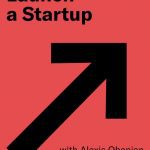Anyone can become an expert in anything in six months, whether it is hydrodynamics for boats or cyclonic systems for vacuum cleaners. After the idea, there is plenty of time to learn the technology.
Sir James Dyson OM CBE RDI FRS FREng FCSD FIEE( born 2 May 1947) is a British inventor, industrial designer, landowner and entrepreneur who founded Dyson Ltd.
According to the Sunday Times Rich List 2020, he is Britain’s richest person with an estimated net worth of £16.2 billion. The 73-year-old engineering entrepreneur, whose groundbreaking vacuum cleaner launched in 1992 led the way for his subsequent redesign of hairdryers, air purifiers, and fans, admitted that his team could not find a way to make the car commercially viable.
In 2017, Dyson launched the Dyson Institute of Engineering and Technology.
In his very inspiring 2003 Autobiography, Against All Odds, Sir James Dyson shares some great insights about his journey, the products, the companies, the decisions, the enemies, sometimes, and the mistakes.
To use a Hollywood cliche, it is said that to be an overnight success takes years of effort. So it has proved with 1ne. There were twenty years of debt, personal overdraft liabilities, at times, of millions of pounds.
Accidental Genius
Like little Dorothy in The Wizard of Oz, the vacuum cleaner discovered what life was really about only after the cyclone arrived. For a hundred years it had remained essentially unchanged, since the first prototype stopped sucking after ten minutes and just pushed the dirt around the room, and the first bag burst on a carpet.
The brand name Hoover became synonymous with this machine, and countless other industrial giants got rich on it. If anyone was going to step in and shake this global farrago up a bit, it was very unlikely to be me, an Englishman, who wasn’t a qualified engineer, without even a physics O Level to my name, riding on the crest of one moment of Edisonian illumination.
If anyone was going to step in and shake this global farrago up a bit, it was very unlikely to be me, an Englishman, who wasn’t a qualified engineer, without even a physics O Level to my name, riding on the crest of one moment of Edisonian illumination.
Hero
My greatest hero was always Isambard Kingdom Brunel, whose inverted catenary curve was crucial to the structure of his bridges, and gave them the distinct stylistic power that still wows onlookers today.
The ‘Edisonian Approach’
My own success has been in observing objects in daily use which, it was always assumed, could not be improved. By lateral thinking – the ‘Edisonian approach’ – it is possible to arrive, empirically, at an advance. Anyone can become an expert in anything in six months, whether it is hydrodynamics for boats or cyclonic systems for vacuum cleaners. After the idea, there is plenty of time to learn the technology.
Anyone can become an expert in anything in six months, whether it is hydrodynamics for boats or cyclonic systems for vacuum cleaners. After the idea, there is plenty of time to learn the technology.
Running and Life
Running is a wonderful thing. It isn’t like a team sport where you depend on other people, or they depend on you, and there is no question of your performance being judged. You either run faster than everyone else or you do not. In running your performance is absolute.
In so many ways it taught me the most significant lessons in all my youth. I was learning about the physical and psychological strength that keeps you competitive. I was learning about obstinacy. I was learning how to overcome nerves, and as I grew more and more neurotic about being caught from behind, I trained harder to stay in front. It is a horribly laboured analogy – and it is flavoured with the fickle seasoning of hindsight – but to this day it is the fear of failure, more than anything else, which makes me keep working at success.
Long Distance Running and Determination
In a 2006 interview with Forbes, Dyson shared some great insights on what he learned from running long distance and how that helped him persevere during trying times.
Forbes: Did you ever want to give up?
Dyson: I wanted to give up almost every day. But one of the things I did when I was young was long-distance running, from a mile up to ten miles. They wouldn’t let me run more than ten miles at school–in those days they thought you’d drop down dead or something. And I was quite good at it, not because I was physically good, but because I had more determination. I learned determination from it.
More particularly, I learned that the moment you want to slow down is the moment you should accelerate. In long distance running, you go through a pain barrier. The same thing happens in research and development projects, or in starting any business. There’s a terrible moment when failure is staring you in the face. And actually if you persevere a bit longer you’ll start to climb out of it.
In his book, How I Built This: The Unexpected Paths to Success from the World’s Most Inspiring Entrepreneurs. Journalist and Radio Host Guy Raz interviewed Sir James Dyson for his podcast, How I built it. He shared Dyson’s story in his great book.
Today, James Dyson is best known for the bagless cyclonic vacuum cleaner that bears his name. It has made him one of the richest men and largest landowners in the United Kingdom. But in the early 1970s, long before he spent five years in his coach house—which was really more of a glorified toolshed—building more than 5,000 prototypes of the vacuum cleaner that would make him a household name, Dyson bought the old farm on which that coach house sits and which inspired the invention at the heart of his very first business—the Ballbarrow.
“I was fixing up the house and doing a garden,” he told me, “and I noticed the deficiencies of metal wheelbarrows with narrow wheels. They’re very unstable. The legs sink into soft ground. The wheels sink into soft ground. So as I used one, I started to redesign it.”
The product he eventually took to market solved every problem he encountered as he went about renovating his new home, but it came with some problems of its own. Namely, hardware stores and garden centers didn’t want to carry it. “They felt it looked very strange,” he said, and beyond that, “not many people buy wheelbarrows. So it’s a very small market.”
“Think for a moment: How many wheelbarrows have you purchased in your lifetime? One, maybe two. Exactly. James’s solution to that was to sell directly to consumers through advertisements in local newspapers. “[The ad] was always next to incontinence pants or the baldness cures,” he said, “but I started to get quite a lot of business. People actually sent checks.”
“So many checks, in fact, that within a few years, his Ballbarrow had 50 percent of the UK market, for whatever that was worth, which was apparently not enough, because he still wasn’t making any money, and he needed to take on investors as a result.
He formed a company with a group of investors. They called it Kirk-Dyson, a fifty-fifty partnership. As part of the funding process, James also assigned the patent for the Ballbarrow to the company. This was, and continues to be, standard practice in most industries. The problem for James was that when they ran out of money again and additional investors came on board, his ownership stake was diluted down to 30 percent, which meant he effectively no longer owned the patent on the very product that he’d designed and that sat at the center of the entire business. It was owned instead by whoever controlled the other 70 percent of the shares in the company.”
To make matters worse, when they decided to expand into the US market in hopes of clawing their way toward profitability, the sales manager tasked with securing a partnership decided to sell the design to an American plastics company so the firm could manufacture and sell the Ballbarrow under the machine’s own name. Naturally, James sued to protect his intellectual property. Except it wasn’t his property anymore, even though his name is on the patent. He lost every suit, along with hundreds of thousands of dollars in lawyers’ fees. After he returned to the United Kingdom following another legal defeat in an American court in 1979, the board of directors fired him from his own company.
James would not make this mistake a second time. Several years later, Amway copied his Dual Cyclone vacuum design and made their own version called the CMS1000. A decade after that, Hoover did the same thing and didn’t even bother to hide it. They called their machine the Triple Vortex Cleaner. Very original. In both instances, James was prepared. This time, he owned the business and controlled the underlying patent for his invention. And this time, when he sued for infringement, he won.
After five years fighting Amway in US court, they settled and Amway became a joint licensee that sold Dyson vacuums. Hoover lost at trial in the UK High Court, and then again on appeal. In 2002, after a three-year battle, Hoover settled with Dyson out of court for £6 million, which, at that time, was the largest court-ordered award ever granted in a UK patent suit.
Importance of Failure
In a May 2007 Fast Company Interview, Dyson asserted the importance of failure,
You once described the inventor’s life as “one of failure.” How so?
I made 5,127 prototypes of my vacuum before I got it right. There were 5,126 failures. But I learned from each one. That’s how I came up with a solution. So I don’t mind failure. I’ve always thought that schoolchildren should be marked by the number of failures they’ve had. The child who tries strange things and experiences lots of failures to get there is probably more creative.
Not all failures lead to solutions, though. How do you fail constructively?
We’re taught to do things the right way. But if you want to discover something that other people haven’t, you need to do things the wrong way. Initiate a failure by doing something that’s very silly, unthinkable, naughty, dangerous. Watching why that fails can take you on a completely different path. It’s exciting, actually. To me, solving problems is a bit like a drug. You’re on it, and you can’t get off. I spent seven years on our washing machine [which has two drums, instead of one].
What’s the main lesson from those 15 years’ developing the vacuum?
It can take a very long time to develop interesting products and get them right. But our society has an instant- gratification thing. We admire instant brilliance, effortless brilliance. I think quite the reverse. You should admire the person who perseveres and slogs through and gets there in the end.
All the Best in your quest to get Better. Don’t Settle: Live with Passion.



Comments are closed.